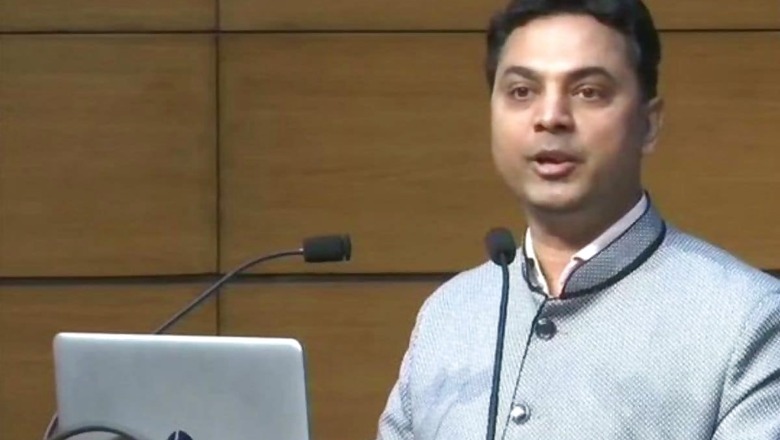Once His Student, KV Subramanian's Economic Survey Takes Aim at Raghuram Rajan's Policies as RBI Guv

views
What is at the root of India’s bad loan problem? The Economic Survey 2020-21 responds to this in a no-holds-barred manner. Shorn of jargon, it pins the blame on “accounting sleight of hand” that the Reserve Bank of India (RBI) allowed during 2013-16, broadly coinciding with the time Raghuram Rajan was the central bank governor.
“Early resolutions of banking crises limit the damage from the same to the economy. Yet, the RBI dragged its feet in biting the bullet while attempting to persuade banks to recognise that the distinction between NPAs and restructured assets is nothing but accounting sleight of hand. The consequent result was a further exacerbation of the situation,” the survey said.
“You can put lipstick on a pig, but it doesn’t become a princess. So dressing up a loan and showing it as restructured and not provisioning for it when it stops paying, is an issue. Anything which postpones a problem than recognising it is to be avoided,” Rajan had said.
Effectively, this meant restructured loans were bad loans by another name.
Eight years later, the Economic Survey is rather scathing on the policies that Rajan piloted that, the survey said, only worsened the problems of NPAs, shorthand for loans that turn bad.
Chief Economic Adviser Krishnamurthy V Subramanian, who did his PhD from the Chicago Booth School under Rajan’s guidance, and his team gives a detailed analysis in the Economic Survey, supported by data and evidence, to demonstrate how the RBI during that period missed a trick or two to contain the bad loan problem before it spiralled into a major systemic issue.
Getting a loan restructured involved negotiations with the bankers who had discretion in selecting cases for restructuring. The survey spares no punches, obliquely hinting at a possible collaboration between firms’ managements and bankers.
“In an era of relaxed provisioning norms, firm managers formally or informally connected with bankers could persuade them to restructure loans, plausibly even unviable ones. This ability made the incumbent management’s influence stronger. It became difficult for the firm’s board to overthrow such managers even if they were otherwise inefficient,” the survey said.
ALSO READ| Need to See Agriculture as Modern Biz Enterprise; Urgent Reforms Required: Economic Survey 2021
The decision on forbearance or allowing temporary suspension on loan repayments resulted in an increase in lending to unproductive firms, popularly referred to as “zombies”. The survey said share of new loans to such “zombies” increased from 5 per cent in FY08 to 27 per cent in FY15.
There was another problem: evergreening of loans. This happens when banks lend a new loan to a borrower on the verge of default, near the repayment date of an existing loan, to facilitate its repayment. Such transactions go undetected as banks are not required to disclose them, unlike restructurings that warrant disclosures.
The survey said a larger part of the credit to the industrial sector during 2008 to 2015 seems to have been used to keep dead loans alive by evergreening.
Subramanian and his team also come down heavily on the borrowers’ boards, raising questions on independent directors and the RBI’s poor oversight on this matter.
Given that promoters are the controlling shareholders in most Indian firms, the non-promoter directors are specifically required to uphold the interests of minority shareholders. They are supposed to act as watchdogs against the likelihood of firms’ management indulging in unhealthy practices such as expropriation of resources or investments in value-destroying projects that may personally benefit the promoters. Therefore, a decline in the proportion of non-promoter directors implies a weakening of governance among firms.
The survey throws hard evidence to back this up.
The percentage of non-promoters on the board decreased significantly after restructuring during the forbearance regime (when loan repayments were suspended), while it slightly increased upon restructuring before forbearance.
Findings show that during the forbearance period (i) the presence of independent directors on boards declined, (ii) the propensity of a CEO becoming the chairman increased, (iii) having a connected director on board became more likely, and (iv) the bank monitoring declined as a lower number of bank-nominated directors occupied board seats.
The survey also is critical of the RBI’s decision in 2015 to conduct the so-called Asset Quality Review (AQR). “The RBI decided to bite the bullet and withdrew regulatory forbearance starting from April 2015. The RBI also decided to conduct a detailed AQR to know the true status of banks’ NPAs”.
ALSO READ| Budget 2021: A Glossary of Words To Help You Decode The Budget Speech
However, the survey said, the AQR impaired the problem as it neither mandated capital raising by banks nor provided a capital backstop.
The only mention of the AQR is in the (RBI’s) Financial Stability Report of June 2016, which mentions “the gross non-performing advances (GNPAs) ratio increased sharply to 7.6 percent from 5.1 percent between September 2015 and March 2016, largely reflecting reclassification of restructured standard advances as non-performing due to the AQR.”
“Clearly, the report gives no details about the assumptions involved or the procedure followed in the exercise,” the survey points out.
It flags the points that the RBI may have overlooked that led to mounting bad loans. “Forbearance represents emergency medicine that should be discontinued at the first opportunity when the economy exhibits recovery, not a staple diet that gets continued for years. Besides, asset quality review must account for all the creative ways in which banks can evergreen their loans,” the survey said.
Read all the Latest News, Breaking News and Coronavirus News here




















Comments
0 comment